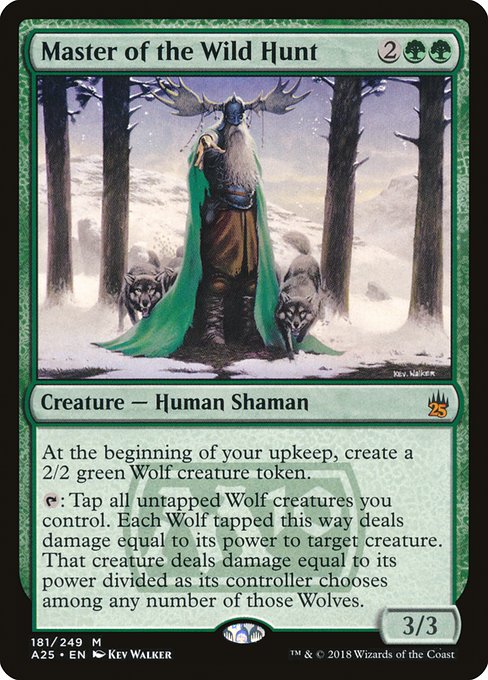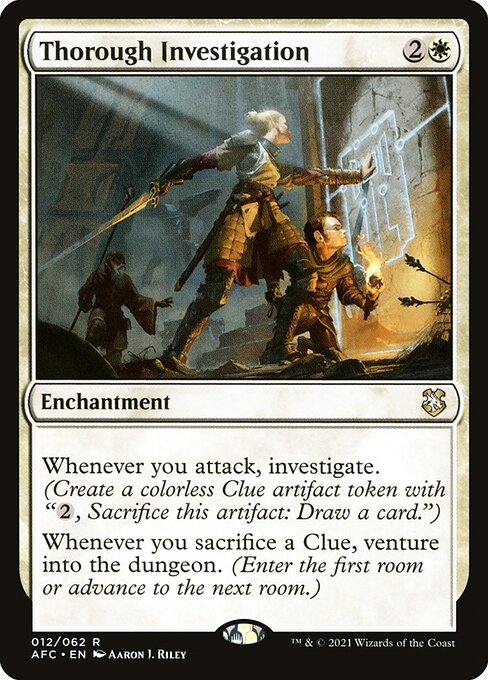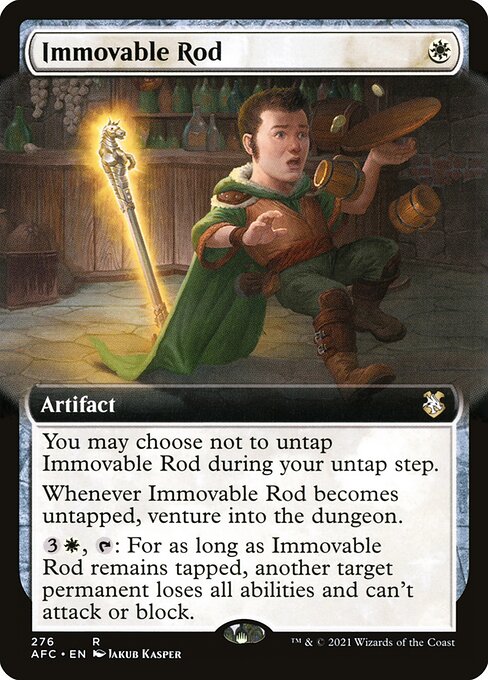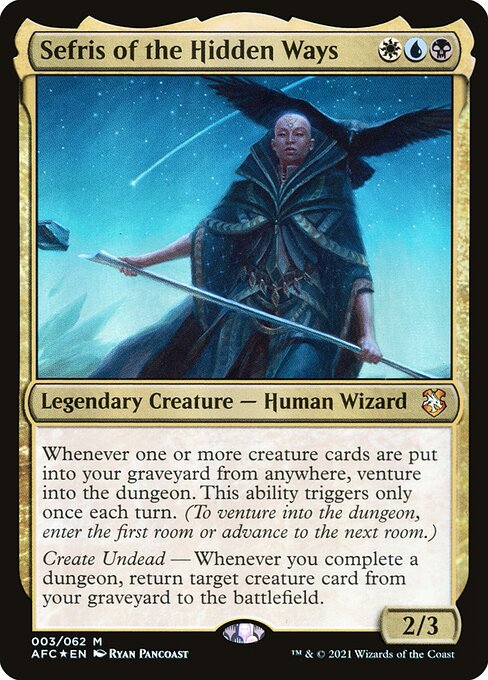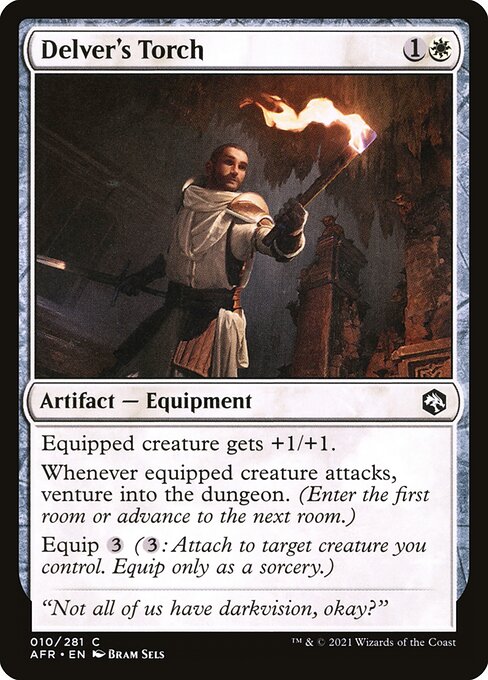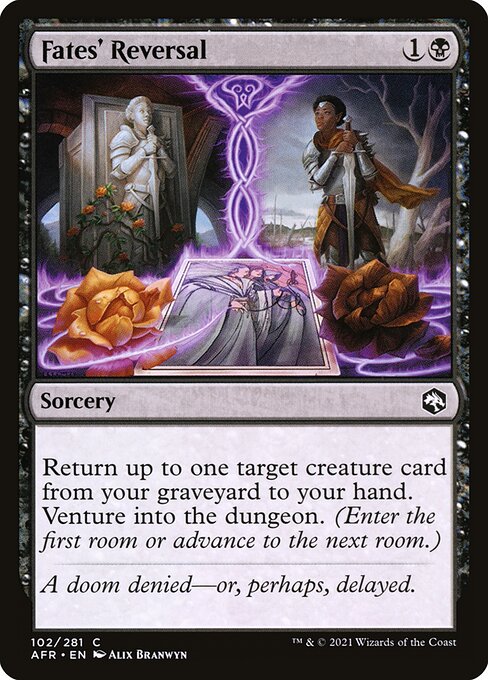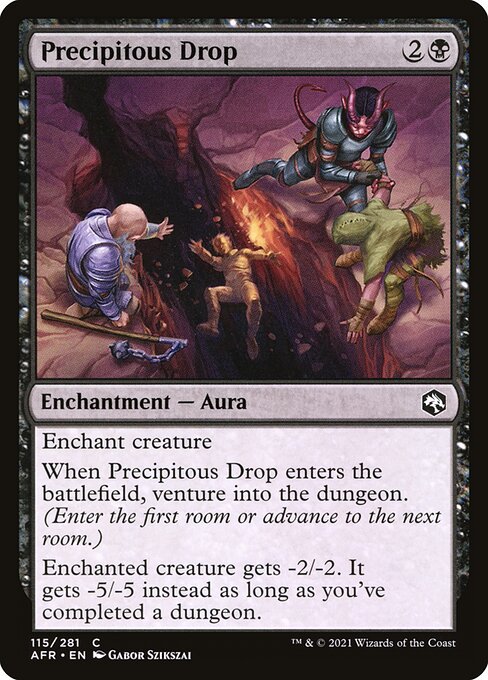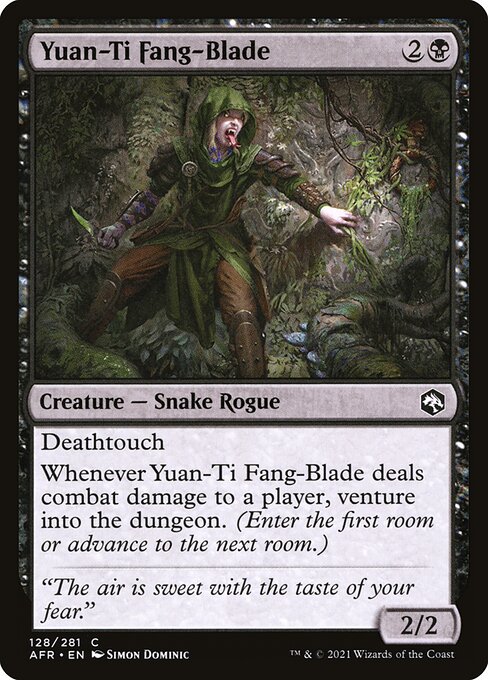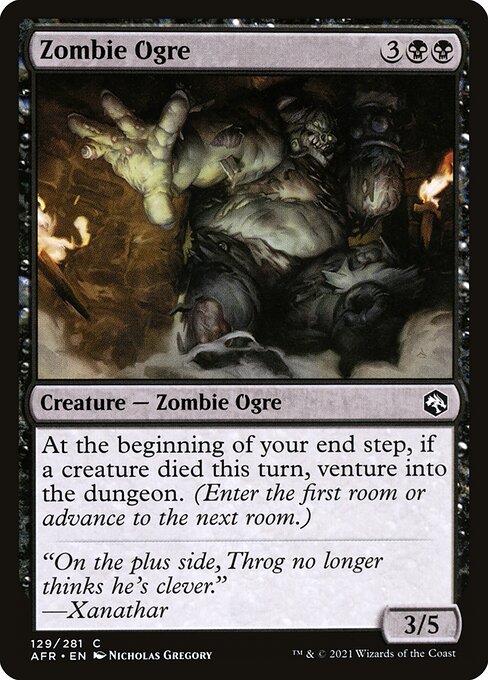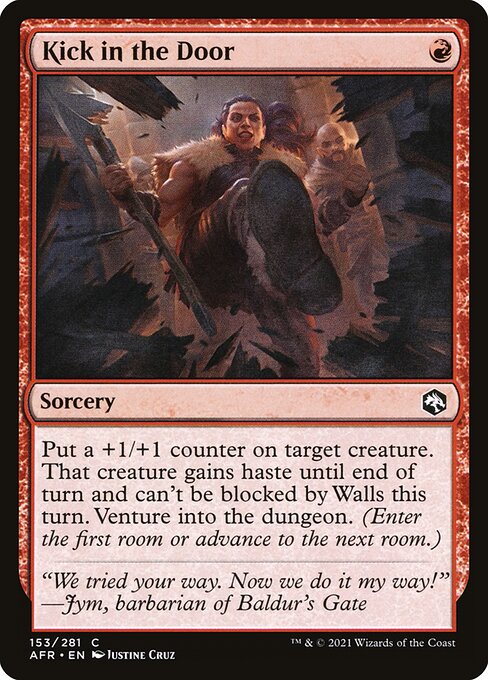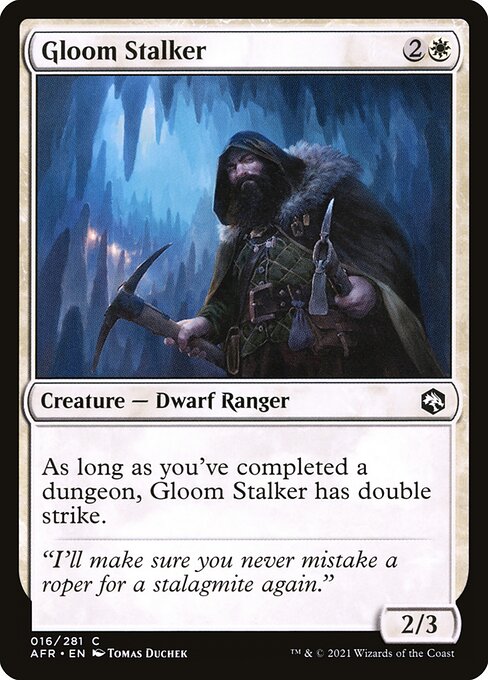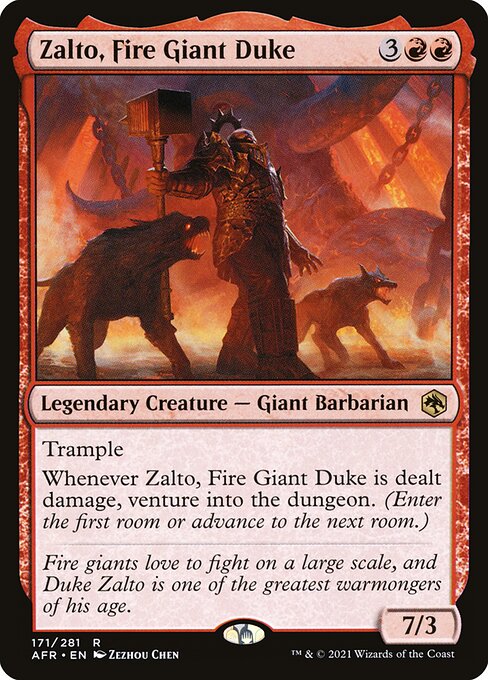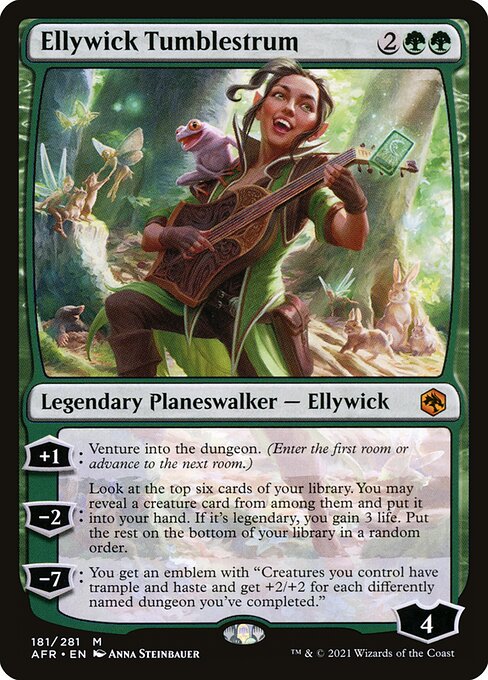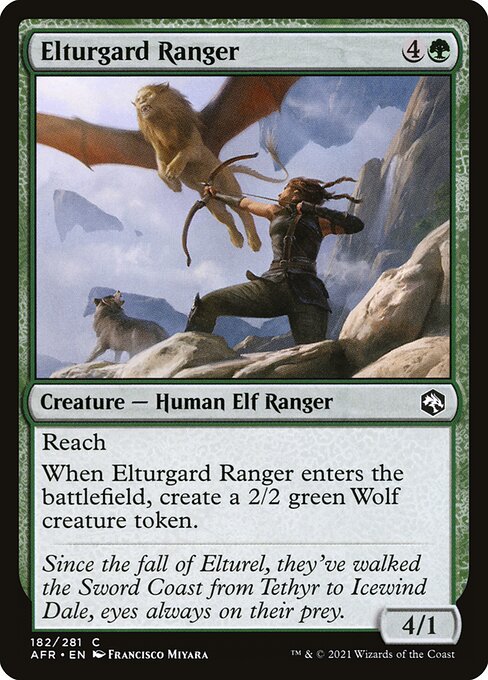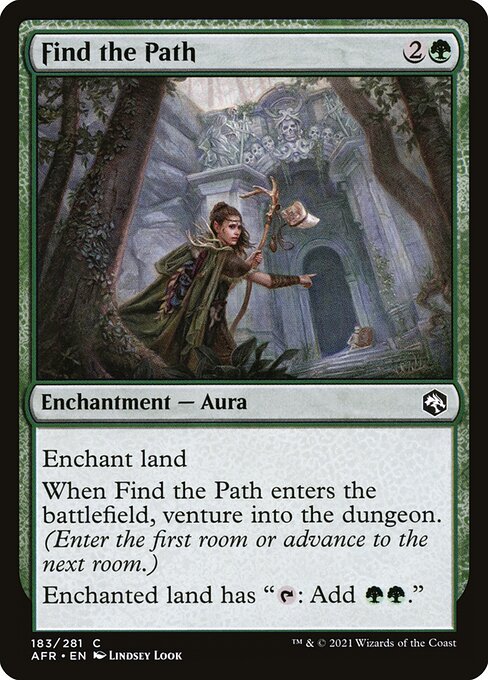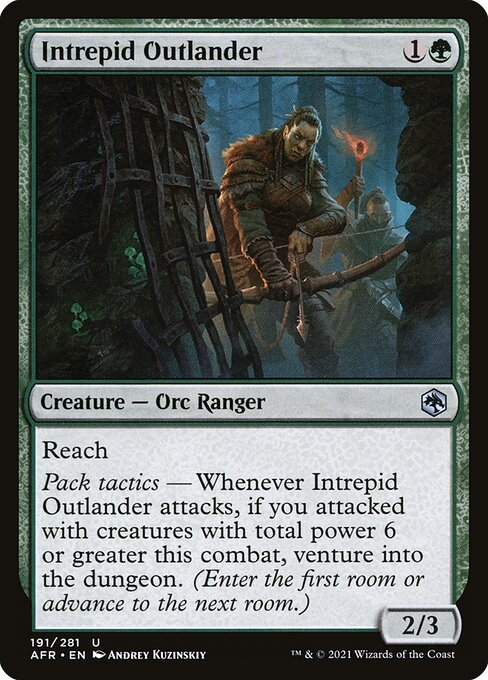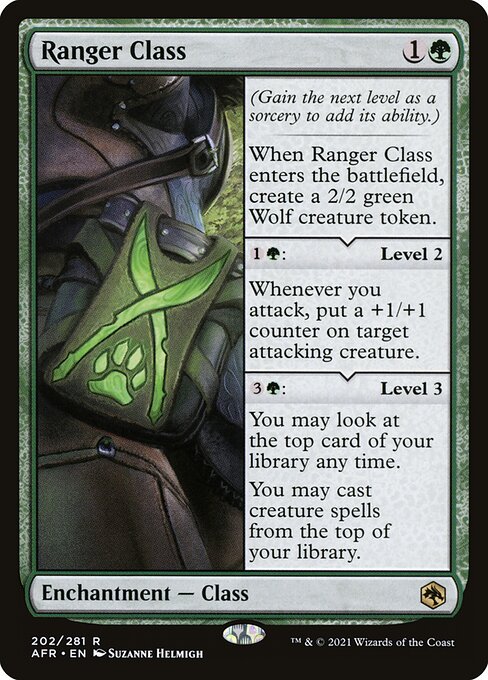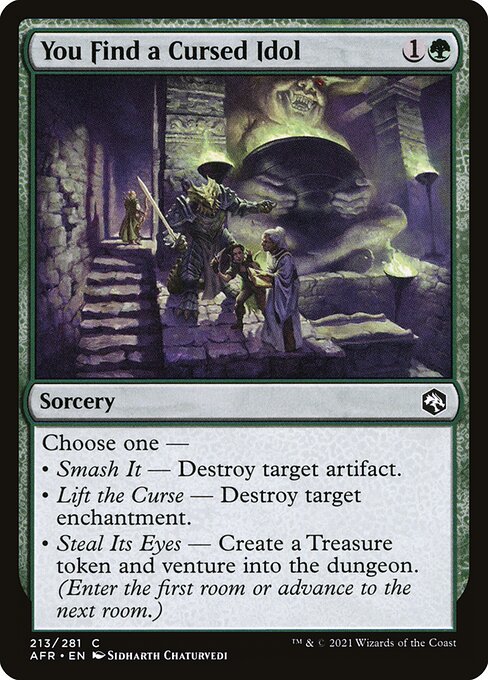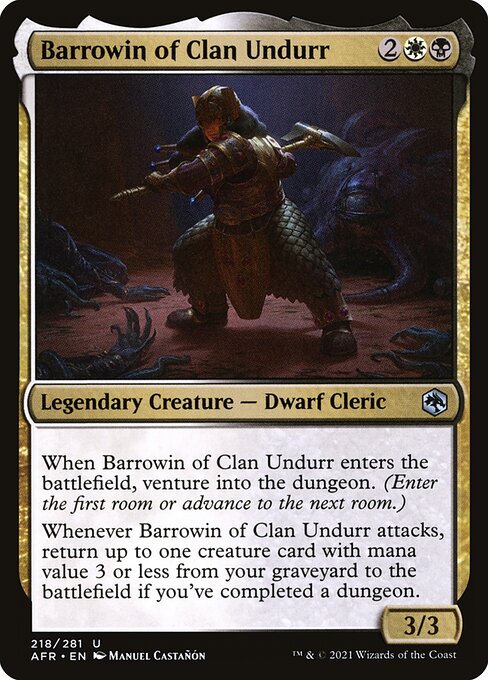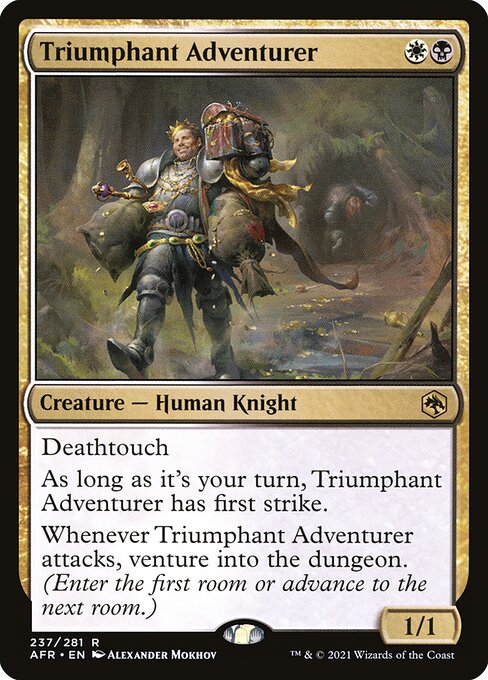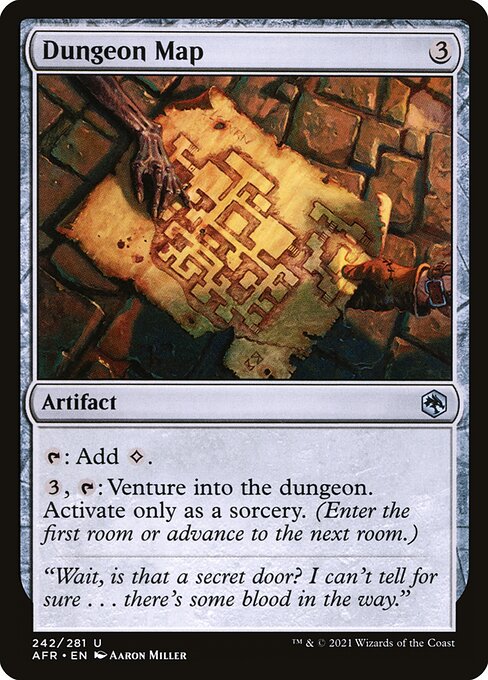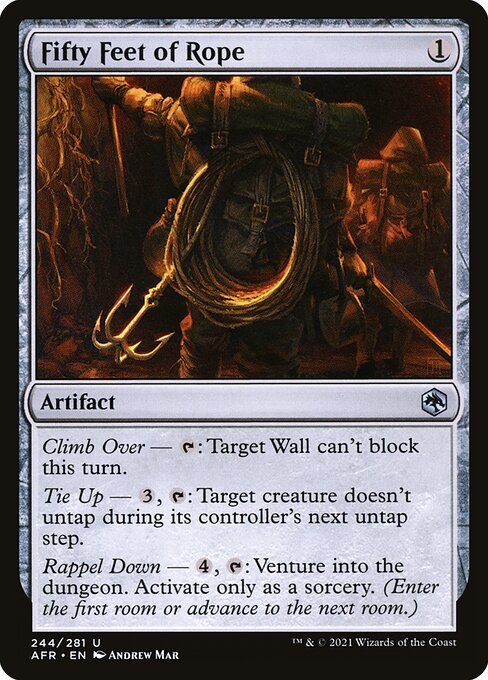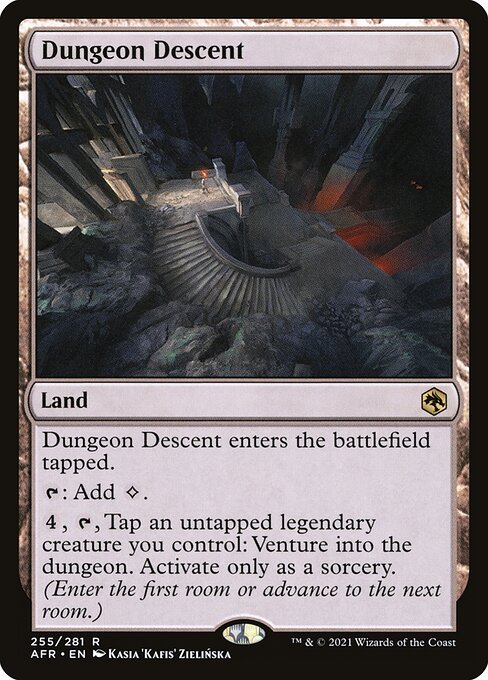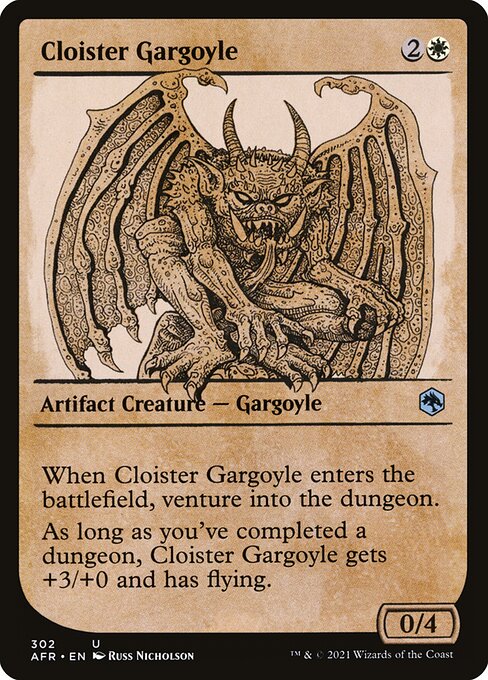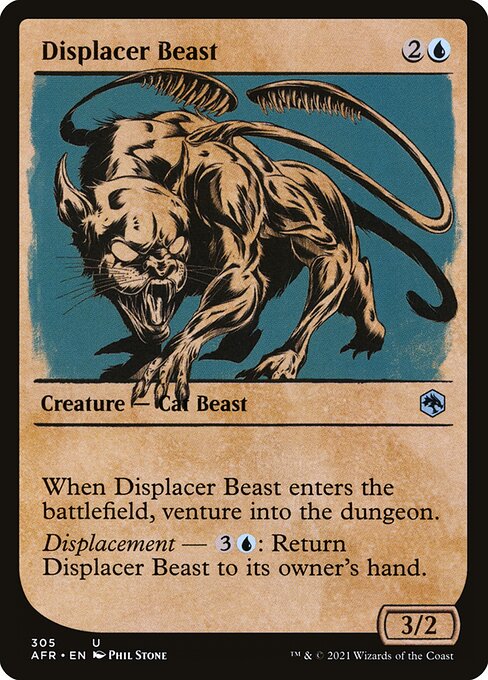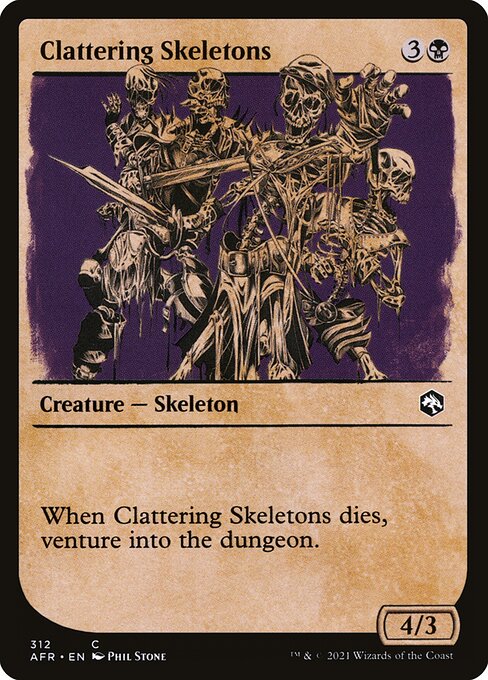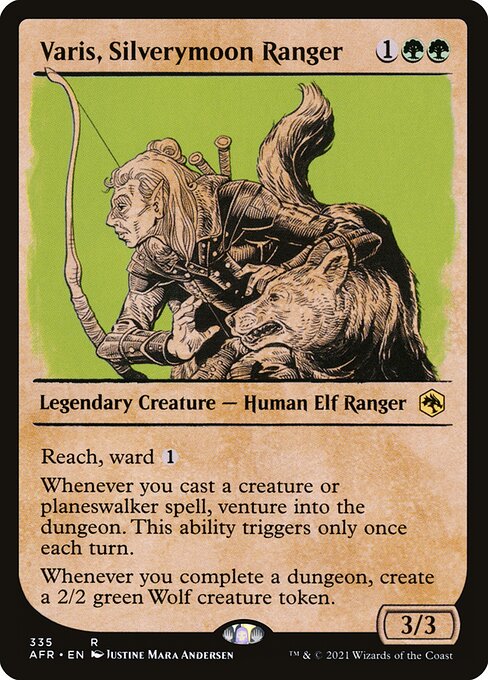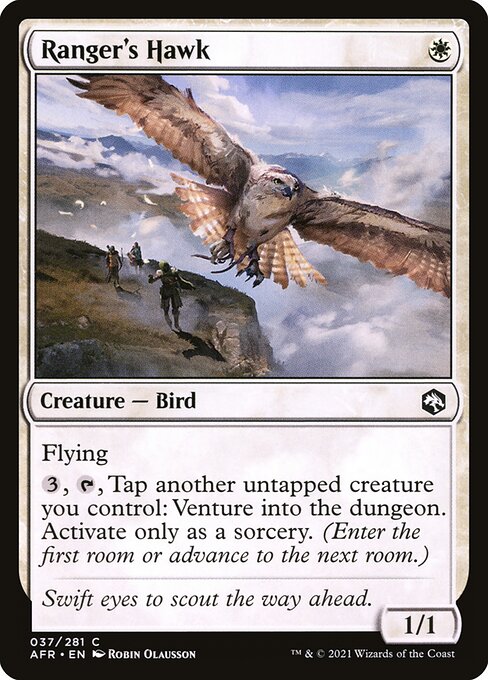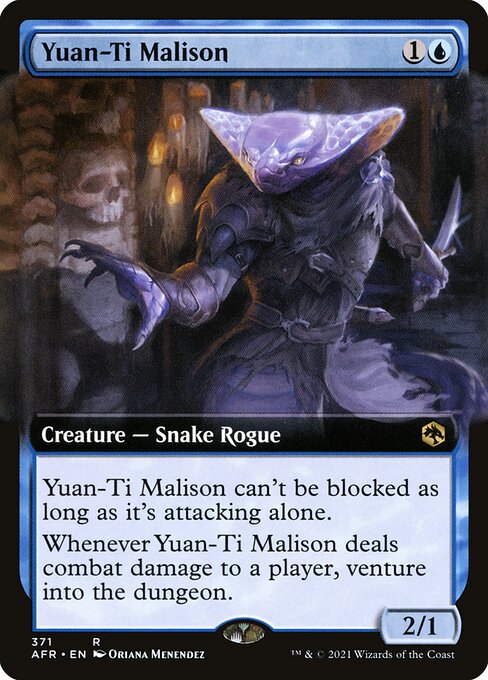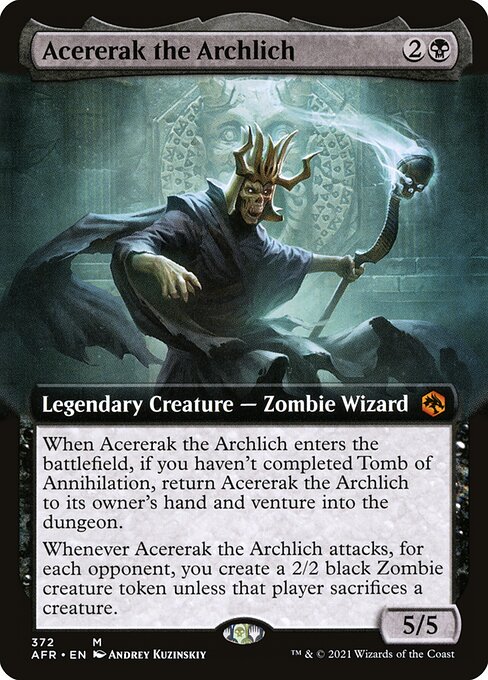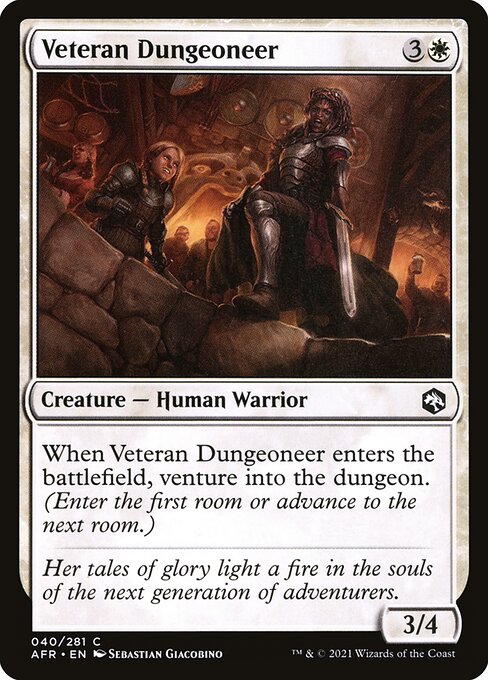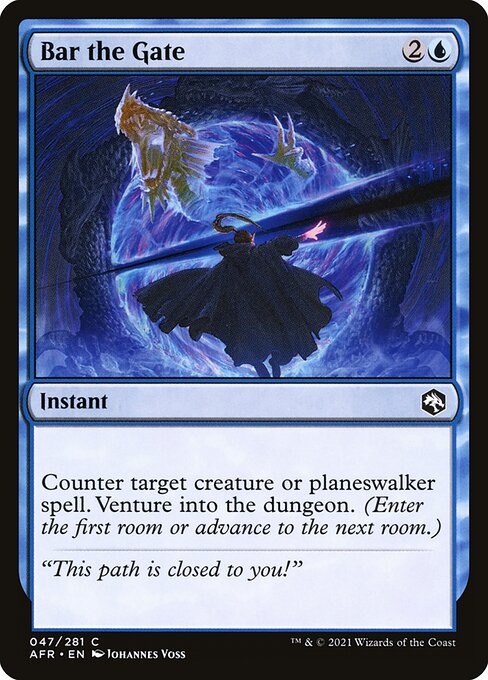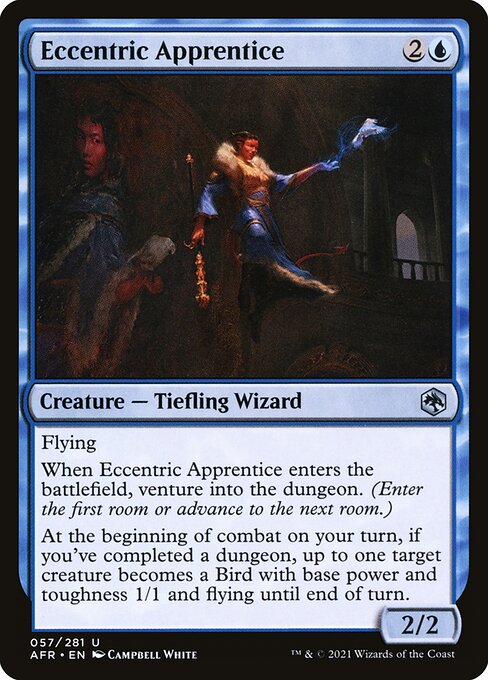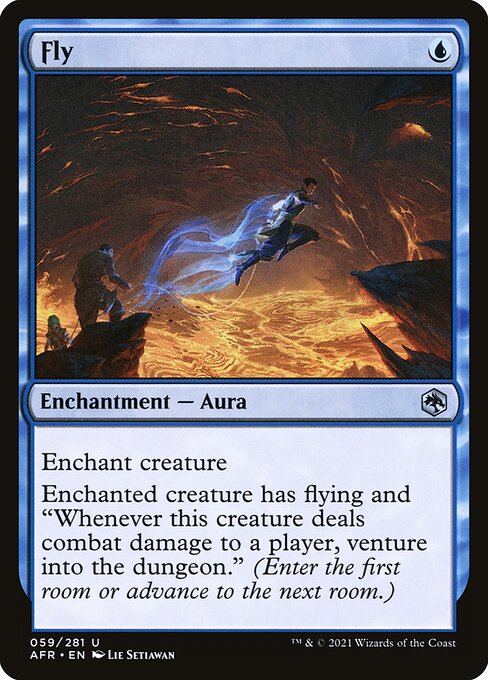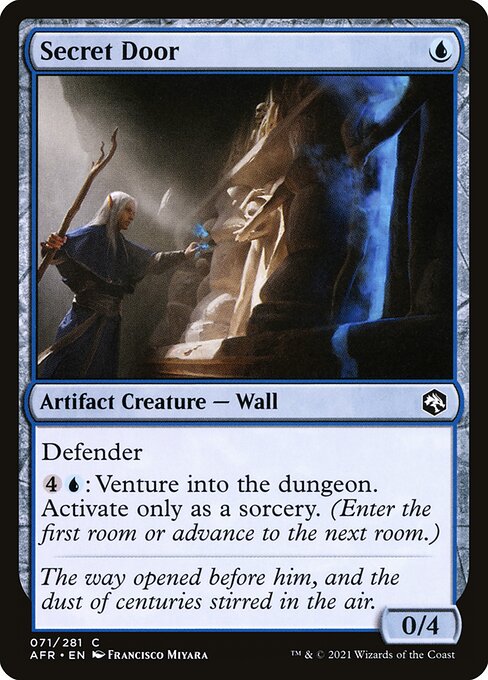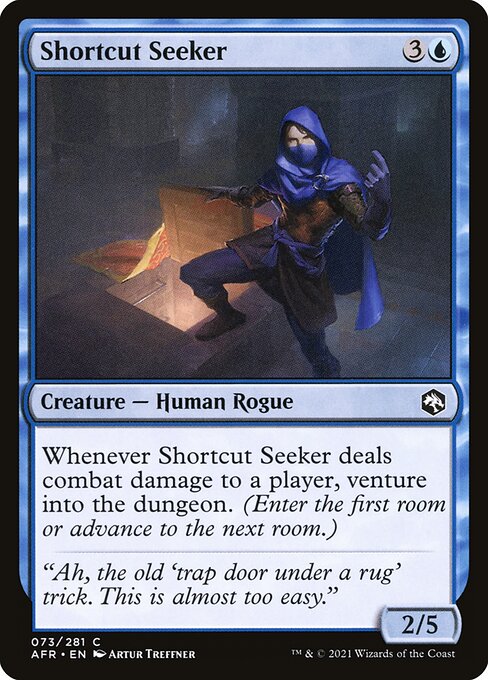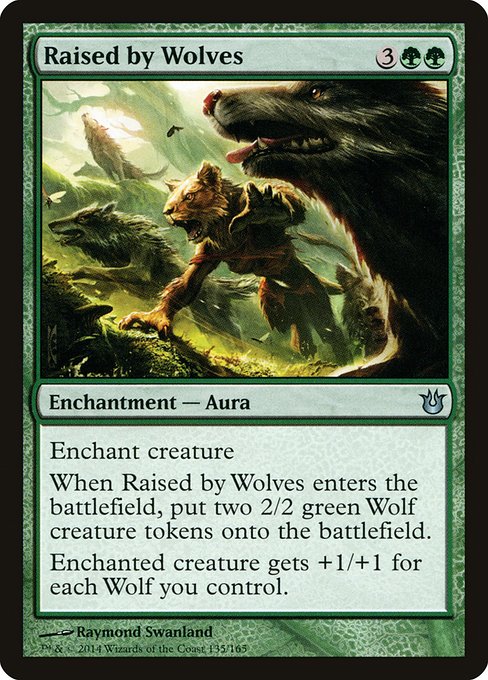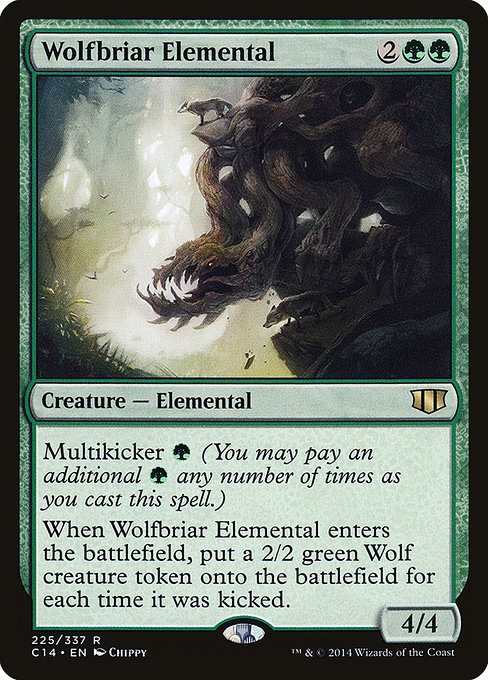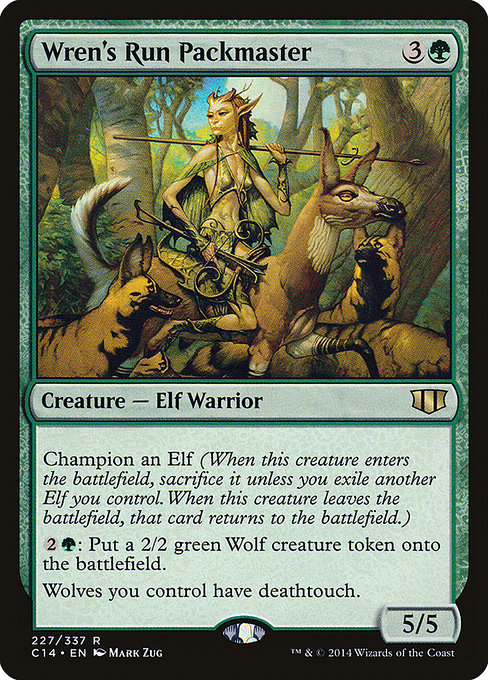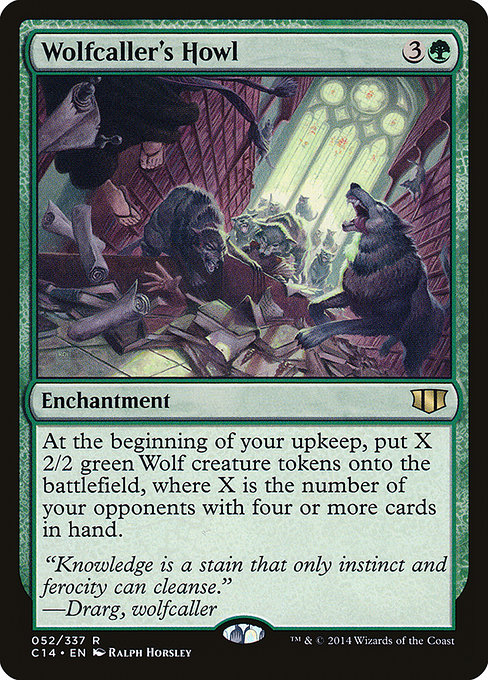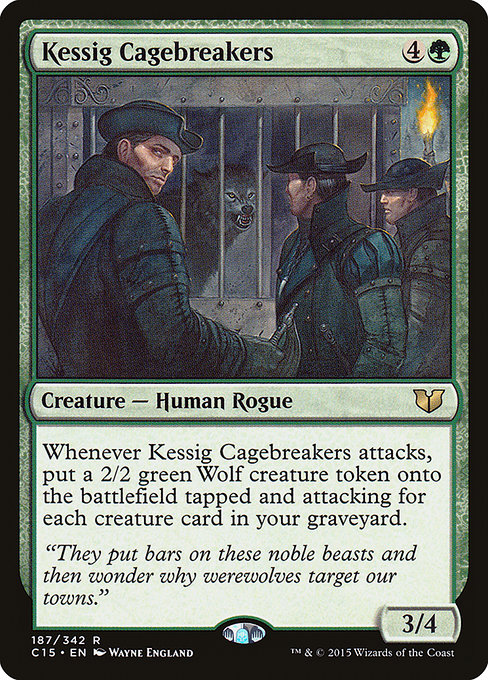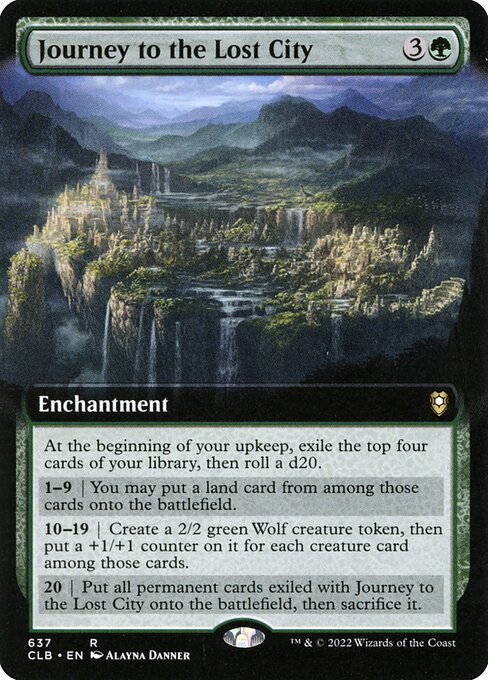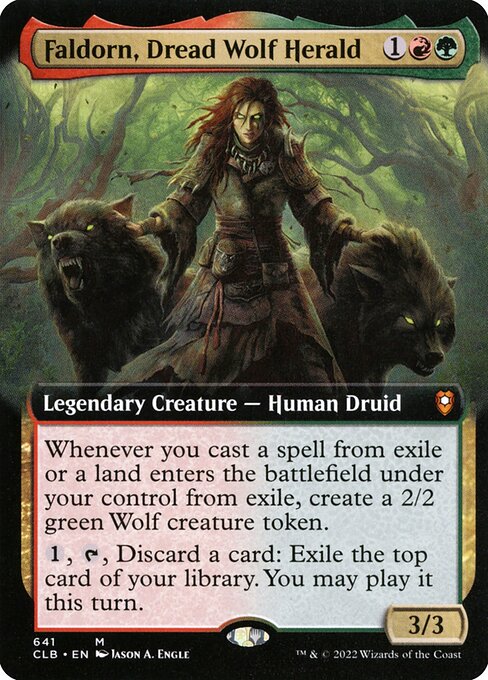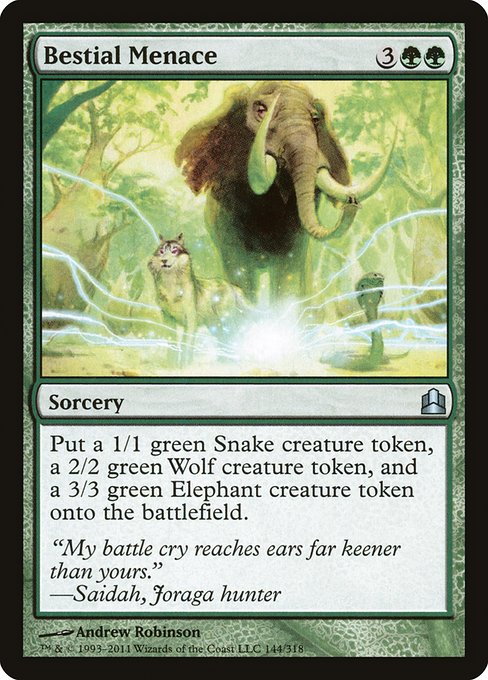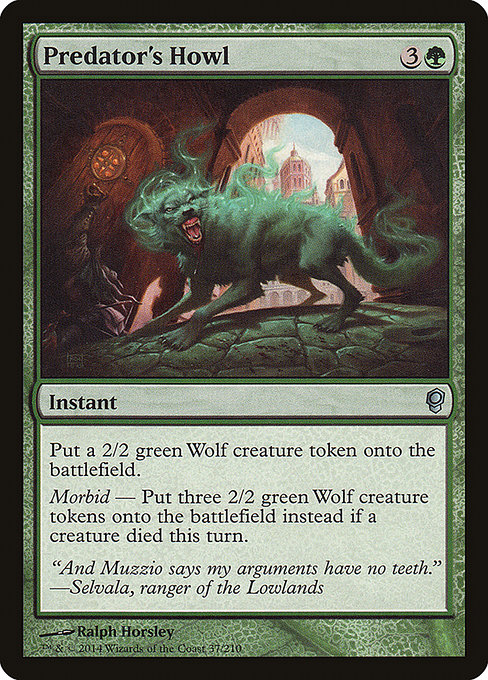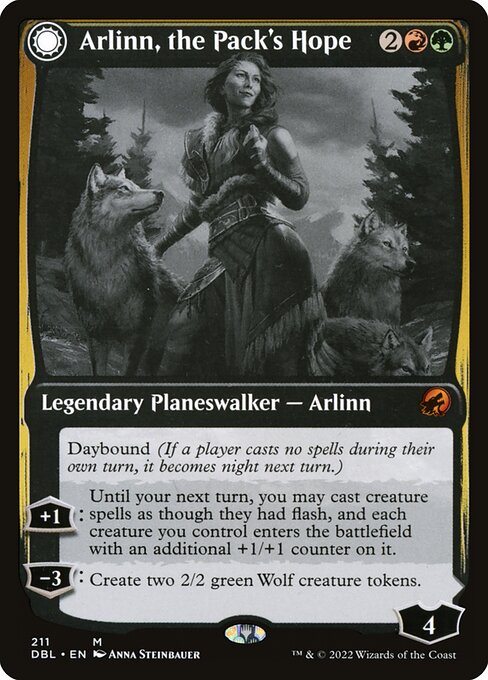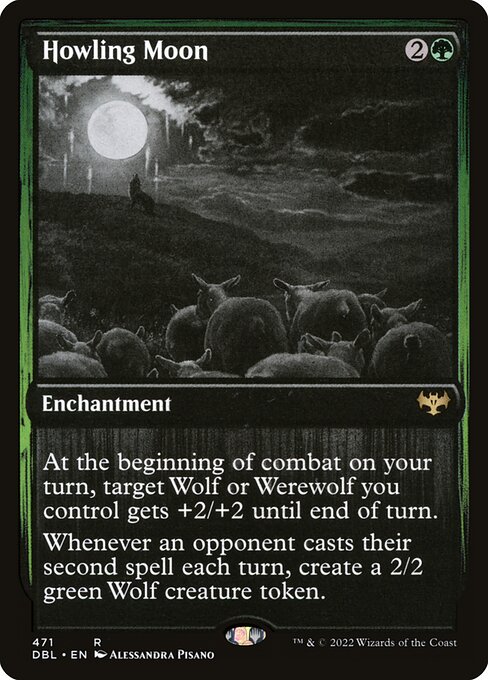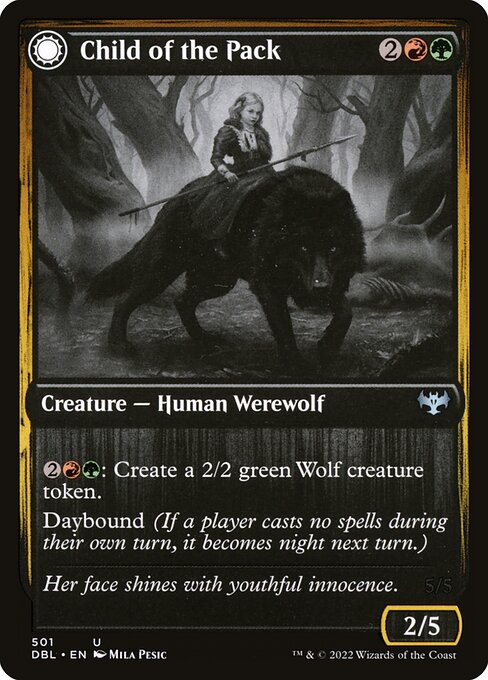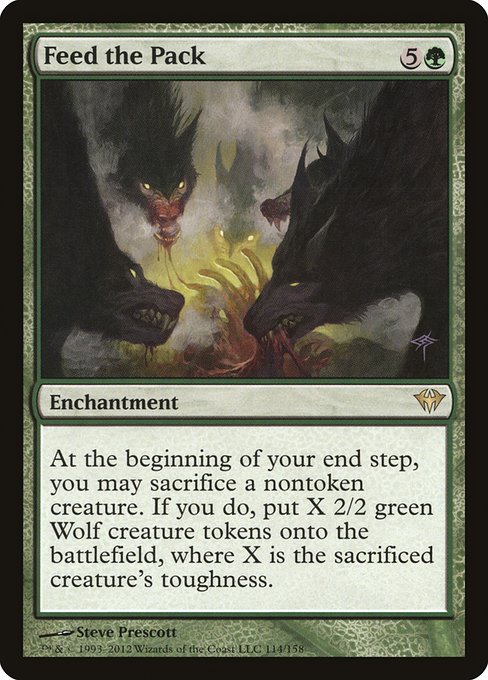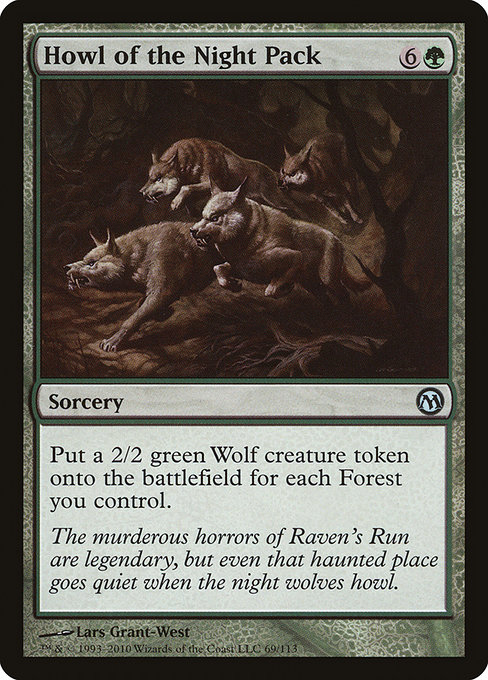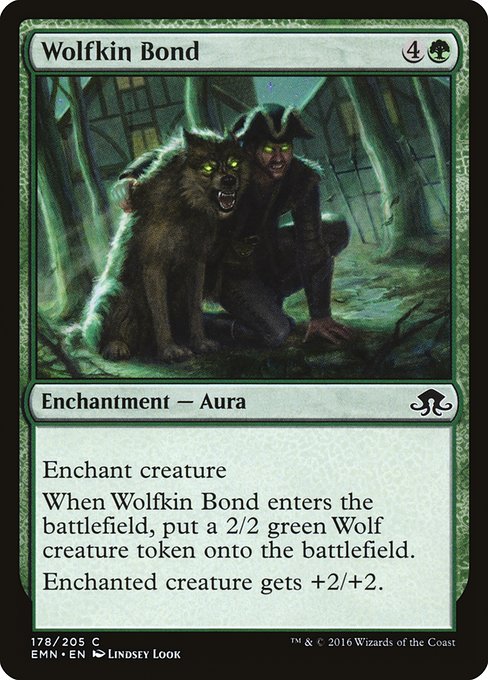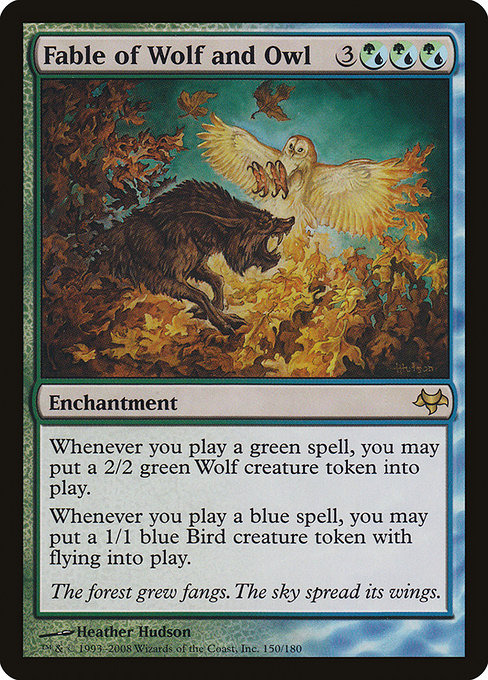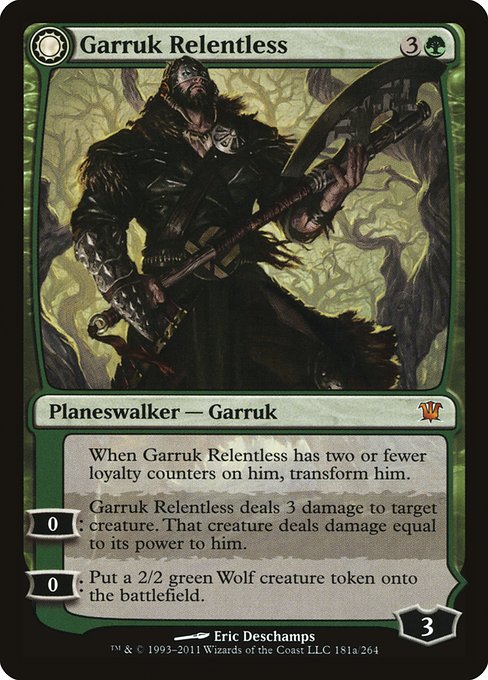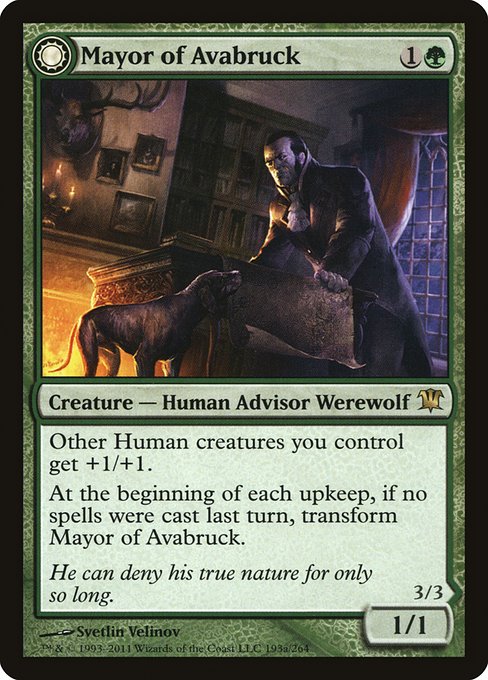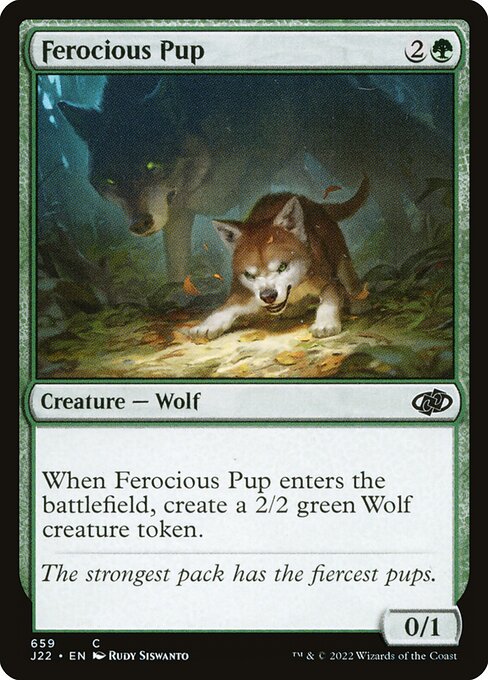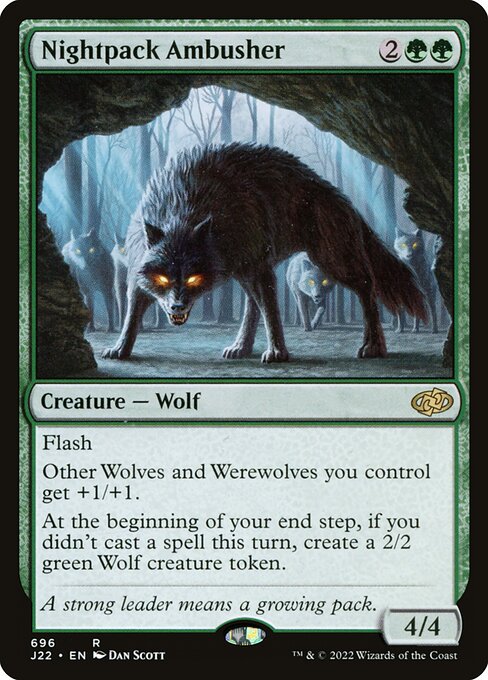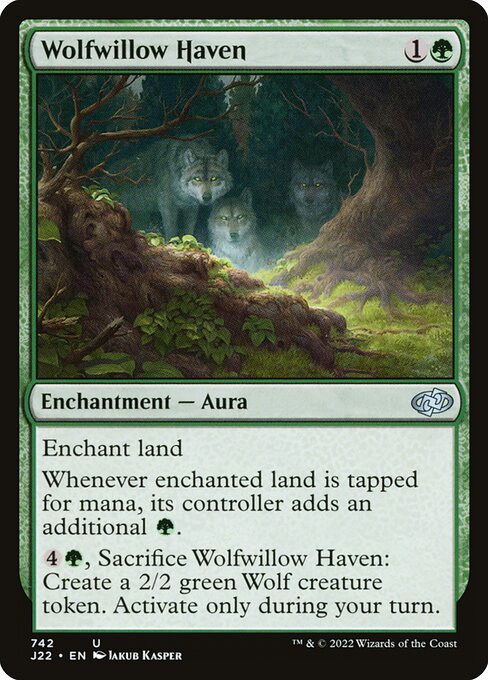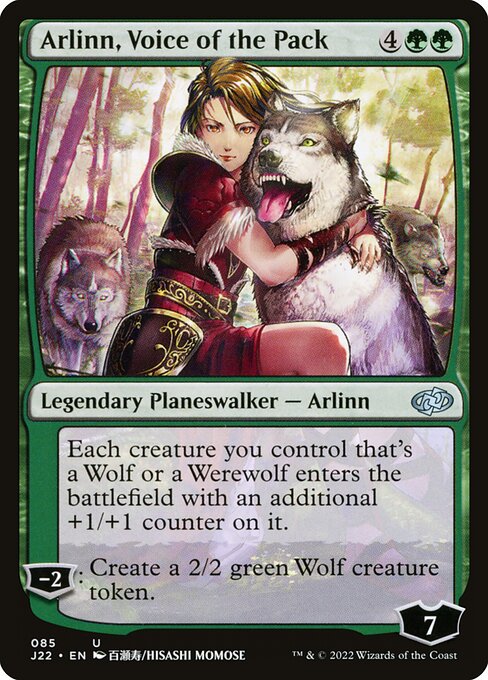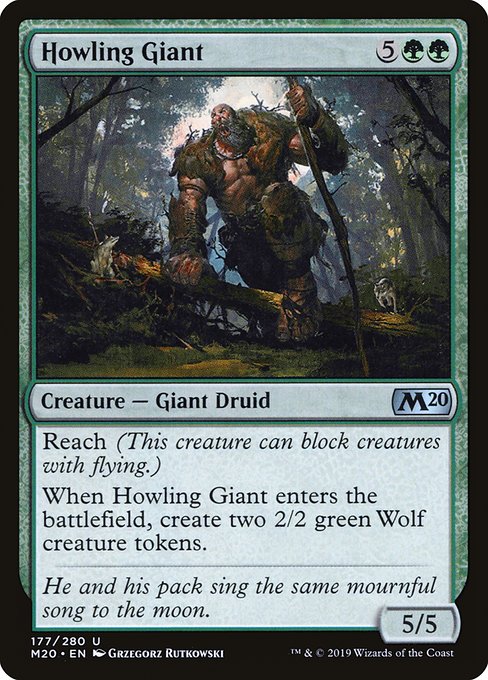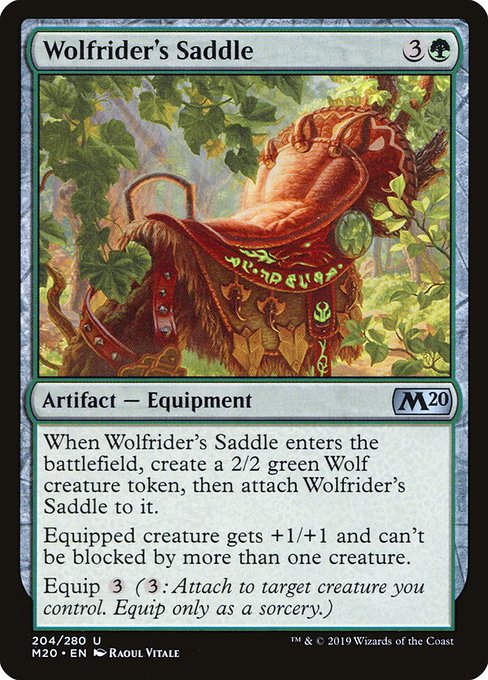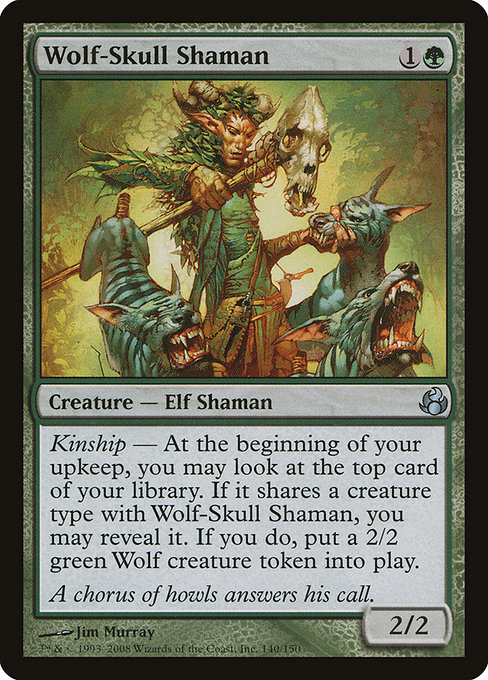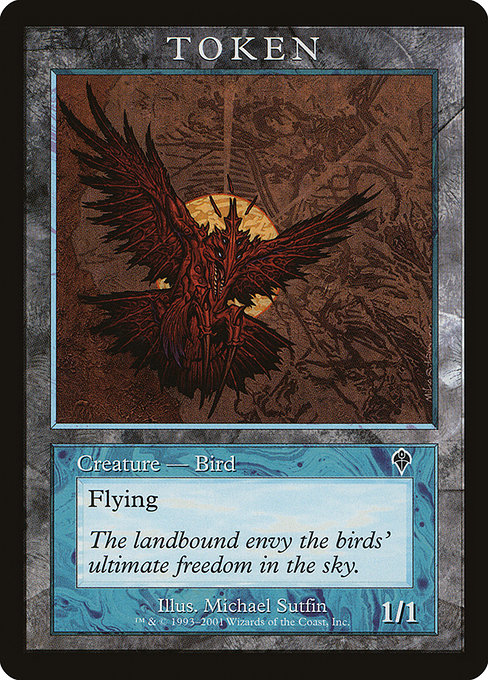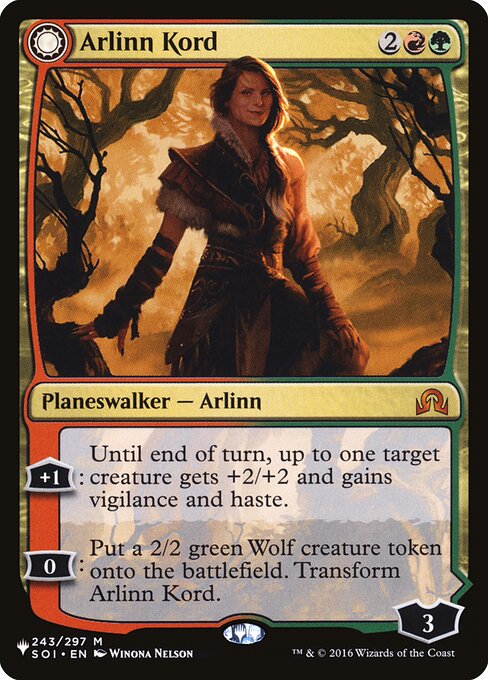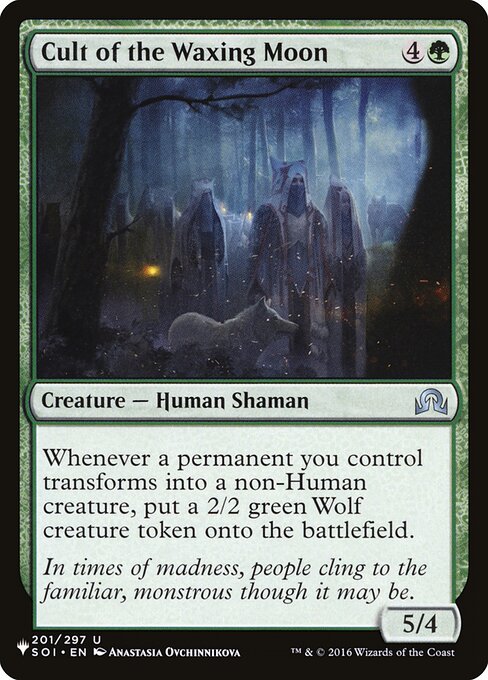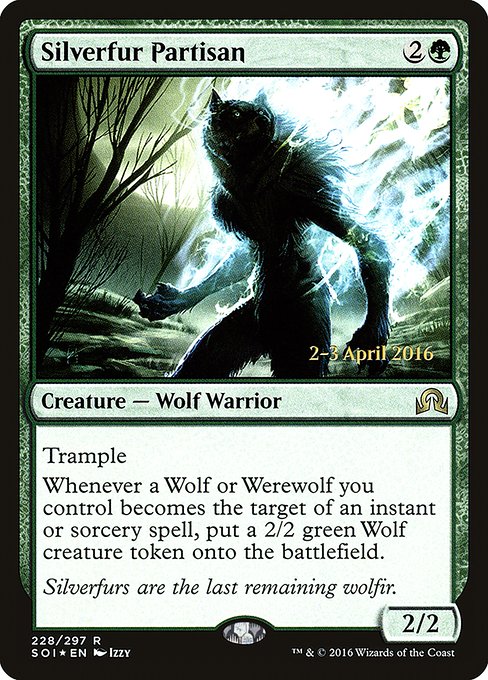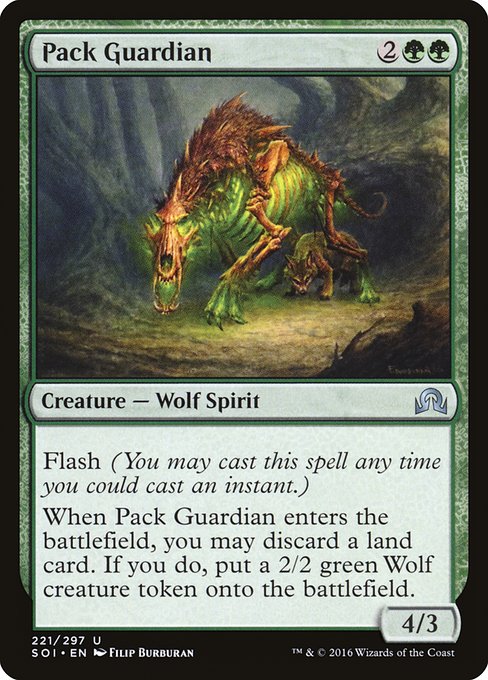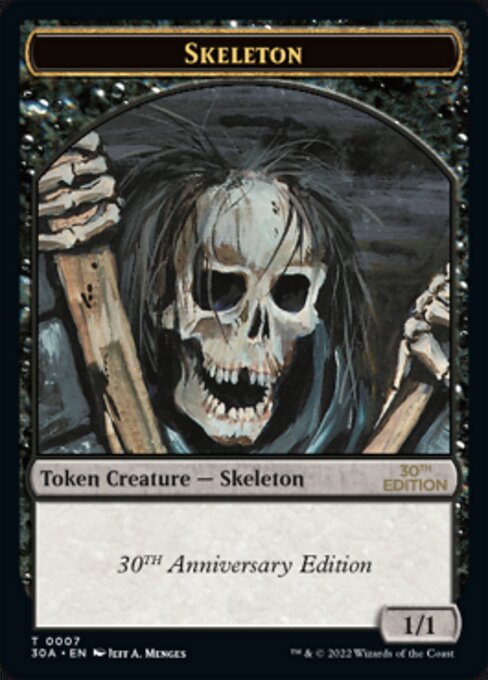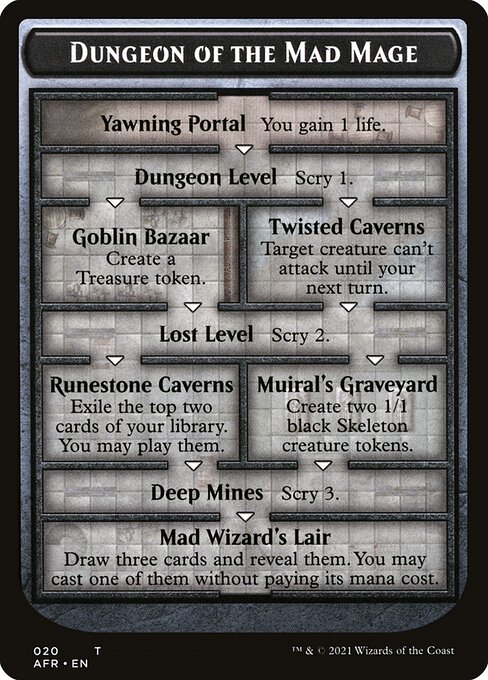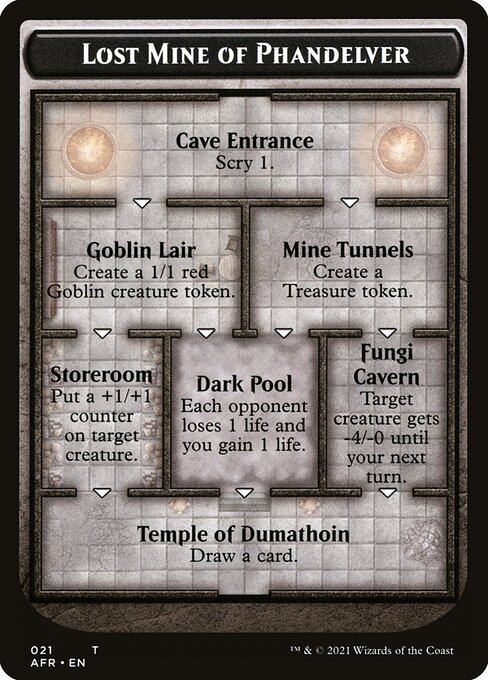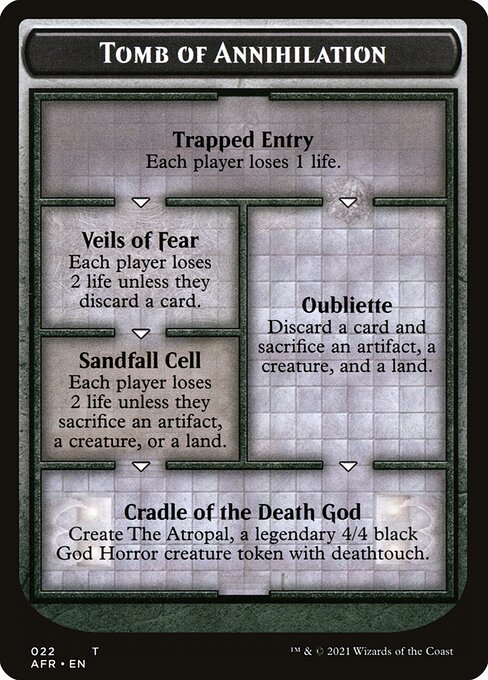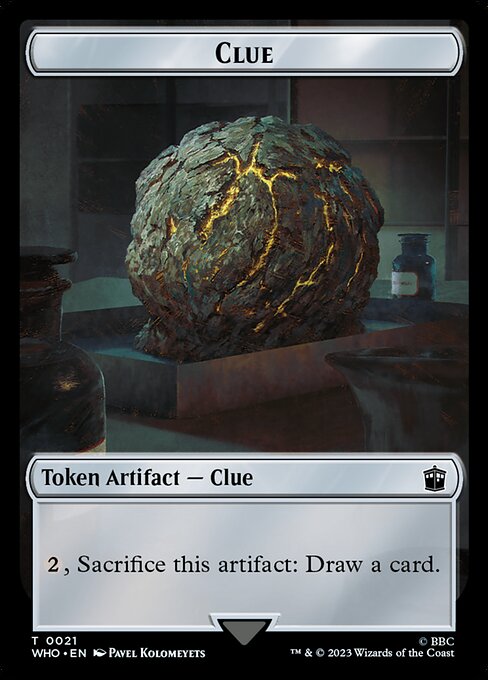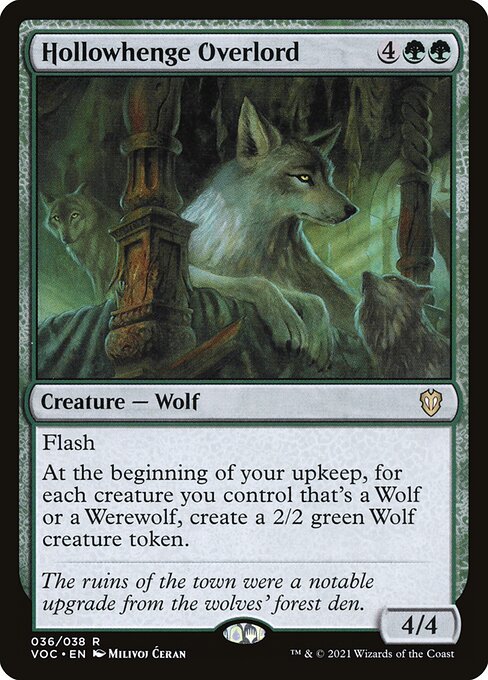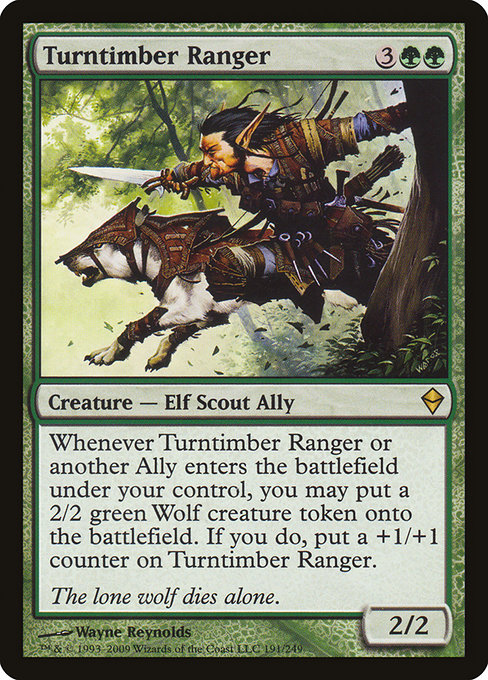Varis, explorador de Luna Plateada
Criatura legendaria — Guardabosque elfo humano
Alcance, rebatir .
Siempre que lances un hechizo de criatura o de planeswalker, adéntrate en la mazmorra. Esta habilidad solo se dispara una vez cada turno.
Siempre que completes una mazmorra, crea una ficha de criatura Lobo verde 2/2.
Siempre que lances un hechizo de criatura o de planeswalker, adéntrate en la mazmorra. Esta habilidad solo se dispara una vez cada turno.
Siempre que completes una mazmorra, crea una ficha de criatura Lobo verde 2/2.
3/3
standard
future
historic
gladiator
pioneer
modern
legacy
pauper
vintage
penny
commander
brawl
alchemy
paupercommander
duel
oldschool
premodern
Rulings
The player venturing into the dungeon chooses which dungeon they will venture into. They may choose a dungeon that they have already completed this game.
Choosing the dungeon or room to venture into is part of resolving the venture into the dungeon keyword action. Once that choice is made, players may not respond until after the appropriate room ability has triggered.
Moving into a dungeon room will cause its room ability to trigger.
You can only move forward (well, downward) in a dungeon, never backwards or sideways.
Dungeons are removed from the game as a state-based action.
To venture into the dungeon, a player moves their venture marker into the next room of the dungeon they are currently in. If they aren't currently in a dungeon, that player instead chooses a dungeon card from outside the game, puts it into the command zone, and moves their venture marker onto the first room.
If you somehow venture into the dungeon while a room's ability is on the stack, you will continue on in the dungeon. If you're already in the last room, complete that dungeon and start a new one.
Dungeon cards are not part of a player's deck or sideboard. In both constructed and limited formats, players can use any dungeon card when they venture into the dungeon.
A player may only have one dungeon in the command zone at a time.
If a player casts a spell that targets multiple permanents their opponent controls with ward, each of those ward abilities will trigger. If that player doesn't pay for all of them, the spell will be countered.
Once you resolve the last room ability of a dungeon, that dungeon is now completed and is removed from the game.
Choosing the dungeon or room to venture into is part of resolving the venture into the dungeon keyword action. Once that choice is made, players may not respond until after the appropriate room ability has triggered.
Moving into a dungeon room will cause its room ability to trigger.
You can only move forward (well, downward) in a dungeon, never backwards or sideways.
Dungeons are removed from the game as a state-based action.
To venture into the dungeon, a player moves their venture marker into the next room of the dungeon they are currently in. If they aren't currently in a dungeon, that player instead chooses a dungeon card from outside the game, puts it into the command zone, and moves their venture marker onto the first room.
If you somehow venture into the dungeon while a room's ability is on the stack, you will continue on in the dungeon. If you're already in the last room, complete that dungeon and start a new one.
Dungeon cards are not part of a player's deck or sideboard. In both constructed and limited formats, players can use any dungeon card when they venture into the dungeon.
A player may only have one dungeon in the command zone at a time.
If a player casts a spell that targets multiple permanents their opponent controls with ward, each of those ward abilities will trigger. If that player doesn't pay for all of them, the spell will be countered.
Once you resolve the last room ability of a dungeon, that dungeon is now completed and is removed from the game.
Rulings
The player venturing into the dungeon chooses which dungeon they will venture into. They may choose a dungeon that they have already completed this game.
Choosing the dungeon or room to venture into is part of resolving the venture into the dungeon keyword action. Once that choice is made, players may not respond until after the appropriate room ability has triggered.
Moving into a dungeon room will cause its room ability to trigger.
You can only move forward (well, downward) in a dungeon, never backwards or sideways.
Dungeons are removed from the game as a state-based action.
To venture into the dungeon, a player moves their venture marker into the next room of the dungeon they are currently in. If they aren't currently in a dungeon, that player instead chooses a dungeon card from outside the game, puts it into the command zone, and moves their venture marker onto the first room.
If you somehow venture into the dungeon while a room's ability is on the stack, you will continue on in the dungeon. If you're already in the last room, complete that dungeon and start a new one.
Dungeon cards are not part of a player's deck or sideboard. In both constructed and limited formats, players can use any dungeon card when they venture into the dungeon.
A player may only have one dungeon in the command zone at a time.
If a player casts a spell that targets multiple permanents their opponent controls with ward, each of those ward abilities will trigger. If that player doesn't pay for all of them, the spell will be countered.
Once you resolve the last room ability of a dungeon, that dungeon is now completed and is removed from the game.
Choosing the dungeon or room to venture into is part of resolving the venture into the dungeon keyword action. Once that choice is made, players may not respond until after the appropriate room ability has triggered.
Moving into a dungeon room will cause its room ability to trigger.
You can only move forward (well, downward) in a dungeon, never backwards or sideways.
Dungeons are removed from the game as a state-based action.
To venture into the dungeon, a player moves their venture marker into the next room of the dungeon they are currently in. If they aren't currently in a dungeon, that player instead chooses a dungeon card from outside the game, puts it into the command zone, and moves their venture marker onto the first room.
If you somehow venture into the dungeon while a room's ability is on the stack, you will continue on in the dungeon. If you're already in the last room, complete that dungeon and start a new one.
Dungeon cards are not part of a player's deck or sideboard. In both constructed and limited formats, players can use any dungeon card when they venture into the dungeon.
A player may only have one dungeon in the command zone at a time.
If a player casts a spell that targets multiple permanents their opponent controls with ward, each of those ward abilities will trigger. If that player doesn't pay for all of them, the spell will be countered.
Once you resolve the last room ability of a dungeon, that dungeon is now completed and is removed from the game.
Votre collection ? vos decks ?
Envie de gérer votre collection et/ou créer des decks ?
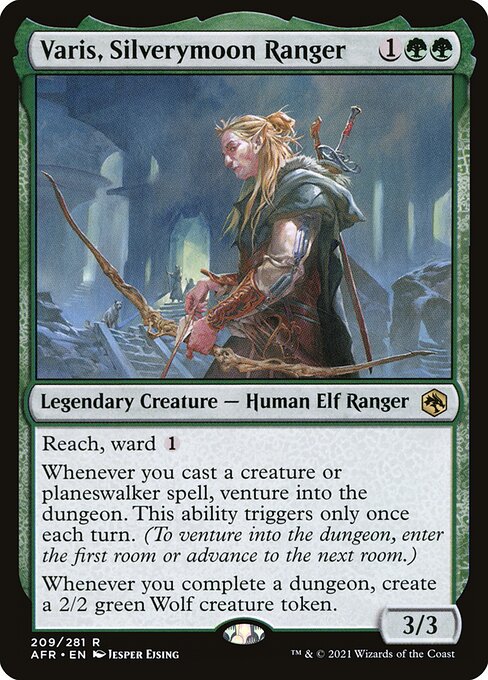
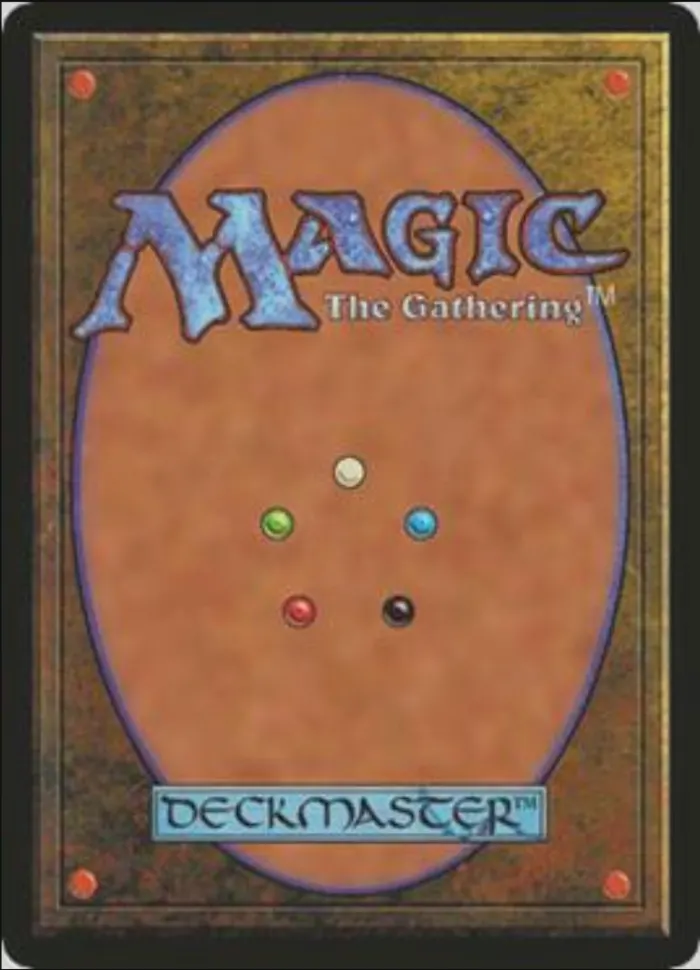
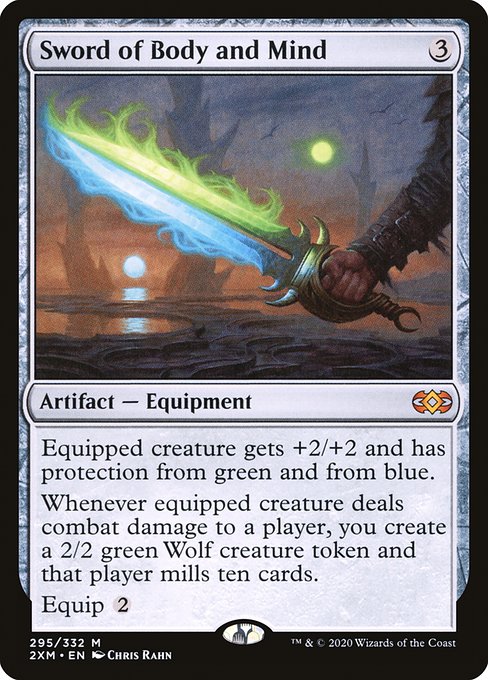

 9.76€
9.76€
